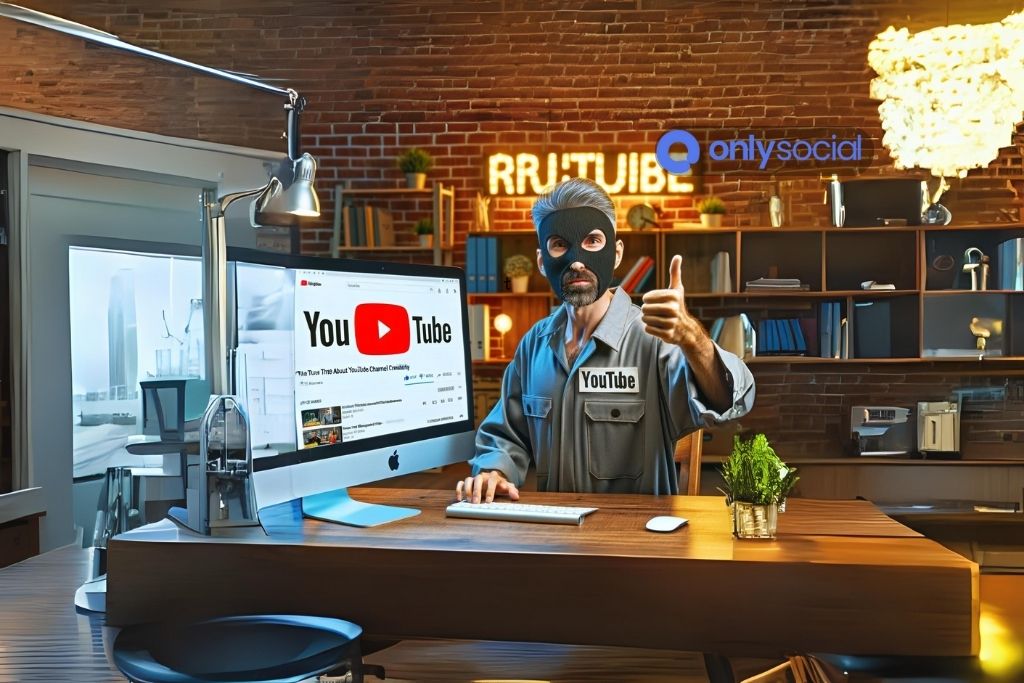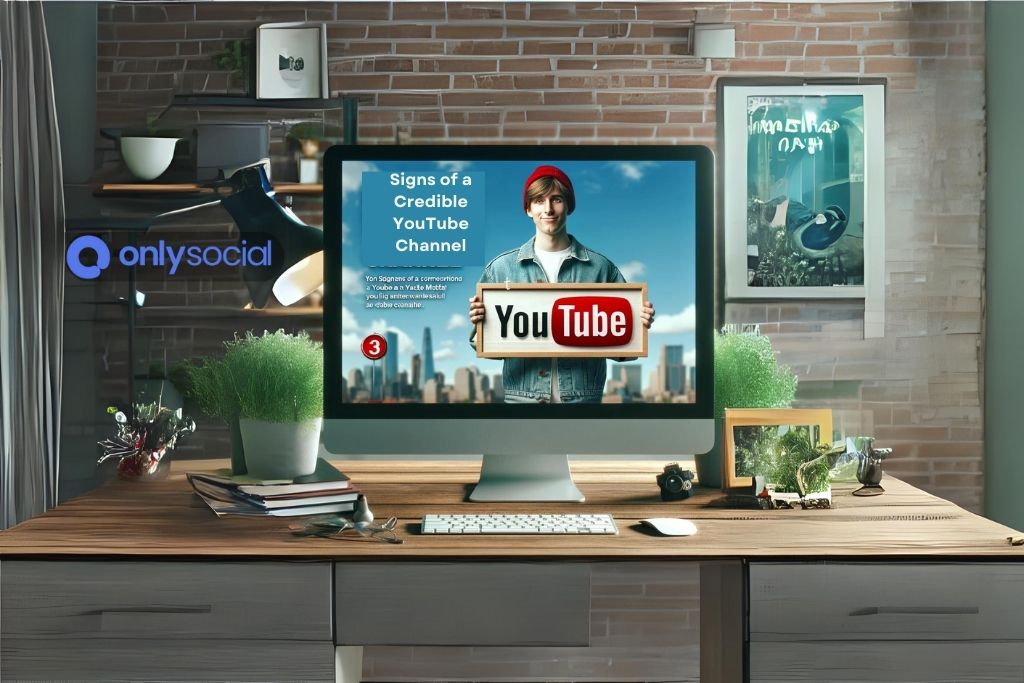The Truth About YouTube Channel Credibility: A Detailed Investigation in 2025

In the digital age, where content is literally at our fingertips, the task of discerning credible sources from less trustworthy ones is a necessary skill. This is particularly true for massive platforms like YouTube, where anyone with a camera and internet can become a content creator. Given this landscape, understanding YouTube Channel Credibility is crucial.
Table of Contents
- 1 Understanding YouTube Channel Credibility
- 2 Signs of a Credible YouTube Channel
- 3 Pitfalls to Avoid
- 4 Techniques for Determining Credibility
- 5 BONUS
- 6 Frequently Asked Questions
- 6.0.0.1 How Do I Check the Credibility of a YouTube Channel?
- 6.0.0.2 Does a High Number of Subscribers Mean a YouTube Channel is Credible?
- 6.0.0.3 What Role Does Bias Play in YouTube Content?
- 6.0.0.4 How Can I Identify Accurate Information on YouTube?
- 6.0.0.5 What are Red Flags Highlighting a Lack of Credibility?
- 6.0.0.6 How Can I Make Use of Reviews and Ratings?
What is YouTube Channel Credibility?
YouTube Channel Credibility is a measure of how trustworthy and reliable a channel’s content is. It’s about sifting through the heaps of available content and being able to say, “Yes, this is a channel I can trust – one that’s knowledgeable, truthful, and genuine.”
You may find yourself asking, “Why should I care about YouTube channel credibility? Why can’t I just watch whatever content I come across?” Well, when you consume content, it influences your ideas, opinions, and sometimes even your decisions. Hence, the source of that content also becomes of vital importance.
The quest to ensure YouTube Channel Credibility can feel like navigating a maze, but don’t despair, dear reader. This guide aims to empower you with the knowledge and tools to discern credibility, traverse the YouTube realm confidently, and consume content consciously, ensuring you are feeding your mind with information you can trust. Let’s get this journey started.
Understanding YouTube Channel Credibility
In an era where misinformation can be spread rapidly, YouTube Channel Credibility has become an increasingly pivotal concept. It’s not about the number of subscribers a channel has or how popular it is; it’s about the accuracy, authenticity, and reliability of the content being shared.
What is YouTube Channel Credibility, and Why Does it Matter?
At its root, YouTube Channel Credibility refers to the trustworthiness of a given channel. Are the videos consistent? Are the claims made in the videos supported by facts and credible sources? Does the creator readily correct mistakes when they misspeak or share inaccurate information? The answers to these questions help define and shape a channel’s credibility.
While more subscribers may often hint at the quality of content a channel offers, YouTube Channel Credibility dives deeper. It reflects the integrity and accountability held by the channel, providing viewers with confidence in the information they receive.
The Misconceptions Around YouTube Channel Credibility
Believe it or not, YouTube Channel Credibility is not always synonymous with popularity. A channel might boast millions of views or have a charismatic host, but this doesn’t automatically make it credible. Similarly, having powerful graphics, high-quality video production, or engaging music is no guarantee of a channel’s veracity.
Credibility cannot be bought or faked; it’s established through consistency, honesty, and the quality of information shared. You, as the viewer, hold the power to determine if a channel should be treated as a reliable source. Therefore, cultivating a discerning eye and understanding where credibility truly lies is crucial.
Armed with this understanding, you’re ready to start exploring how to identify signs of credibility and how to avoid the pitfalls that can mislead you. Stay tuned.
Signs of a Credible YouTube Channel
Understanding YouTube Channel Credibility involves more than recognizing its importance, it requires the ability to discern credible channels from those that are not. Now, as we further unravel this mystery, here are some telltale signs that point towards a reliable and credible YouTube channel.
Consistency is Vital
One of the first signs to seek in proving a channel’s credibility is the consistency of its content. A credible channel not only maintains regular posting schedules but also upholds consistency in the quality, context, and approach of its content. It means their videos align with what their channel purports to deliver.
Assess The Description and Verification Status
The verification tick and channel description offer valuable insights. While the verification tick doesn’t attest to the validity of the content, it certifies that the channel belongs to an authentic entity, be it a brand or a recognized figure. Explore the ‘About’ section, too. Detailed, professionally-constructed descriptions that transparently express the channel’s purpose signify reliability.
Quality of Video Production
Top tier channels maintain superior video elements, including audio, video resolution, and lighting, enhancing the viewer’s experience. Nevertheless, all these elements merely improve the audience’s viewing pleasure and do not validate the content.
Citation of Sources
Credible channels take the time to validate information and credit sources. This practice signifies a commitment to precision and respect for its audience’s knowledge growth.
Audience Engagement
Examine the channel’s interaction with its viewers. Channels valuing credibility tend to positively engage their audience, address constructive criticisms, and rectify misinformation when identified.
Reviews and Ratings
Pay attention to genuine viewer feedback, especially those that critically appraise the content. Similarly, a balanced likes-to-dislikes ratio often favors credibility.
YouTube Channel Credibility is not an automatic ticket coming with popularity. It’s a precious status earned through consistency, reliability, and a confirmed commitment to delivering valuable content. As viewers, it behooves us to recognize these signals and make informed choices in our digital consumption journey. In the following section, we will address the typical pitfalls to avoid when identifying credible YouTube channels.
Pitfalls to Avoid
In the quest to establish YouTube Channel Credibility, it’s crucial to know which pitfalls to avoid. These common misjudgments can lead viewers astray, causing them to trust in inaccurate or misleading content.
Subscribers ≠ Credibility
A high subscriber count may seem like a surefire sign of a credible channel. But don’t let the numbers trick you; subscriber count is not a reliable indicator of credibility. It merely suggests popularity, which could be driven by various factors, not all of which reflect the content’s accuracy or reliability.
High-Quality Production ≠ Accurate Information
Channels with top-notch video production might make a positive first impression. However, glossy visuals should never be confused with content veracity. Even the most professionally edited videos can spread false information.
Don’t Take Everything at Face Value
Not every video that appears educational or news-based is necessarily accurate. It’s crucial to double-check and validate the information independently whenever possible. Depend on multiple sources before forming your judgment.
Beware of Bias
Every content creator has their perspectives and biases, which can subtly influence the information they present. Be aware of such potential bias and consider it when assessing the content.
Ignoring Community Guidelines Violations
If the channel has received warnings or strikes for violating YouTube’s policies, it’s a clear red flag. It not only questions the creator’s ethics but could also indicate potential credibility issues.
Navigating the vast universe of YouTube can feel daunting, especially when it comes to establishing YouTube Channel Credibility. Remember, though, to take everything with a grain of salt and utilize critical thinking skills. In the following part, we’ll explore the techniques you can use to determine the credibility of a YouTube channel more easily.
Techniques for Determining Credibility
Delving deeper into the concept of YouTube Channel Credibility, let’s explore the different techniques you can use to confidently determine the credibility of a channel.
Cross-Referencing Information
When watching videos from a channel whose credibility you’re unsure of, cross-reference the information with reliable sources. Whether news articles, books, or other YouTube channels, conducting personal research strengthens your understanding and helps confirm or discredit the information you’re consuming.
Investigate the Creator’s Background
Understanding the creator’s background can offer insights into their expertise and credibility. Are they experts or professionals in the field? Have they previously worked on similar projects, or do they have any relevant qualifications? This knowledge helps contextualize the content, allowing for informed judgment.
Analyze Video Presentation and Structure
A video’s presentation and structure can speak volumes about its credibility. Videos presenting claims in a logical, well-structured manner, with supporting evidence, contribute to their credibility. Conversely, videos lacking structure or evidence could hint at questionable content.
Distinguish Between Fact and Opinion
YouTube channels often combine factual content with personal opinions. Identifying the line between the two is crucial for a balanced understanding. Pay attention to phrases like “I think,” “in my opinion,” or “I feel,” which signal the presence of personal opinions.
Check Reviews and Ratings
Look for reviews and ratings from viewers who have critically analyzed the content. While you shouldn’t base your judgment solely on them, their insights can help confirm or challenge the channel’s credibility. Websites like SocialBlade and ChannelCrawler can show ratings or analytics that further reveal the channel’s perceived credibility.
Look for Patterns
Analyze several videos from the channel to identify recurring patterns. Inconsistent information, withholding source citations, spreading conspiracy theories, or unresolved community guideline violations can dent YouTube Channel Credibility.
Understanding how to navigate and assess the vast YouTube landscape comes with practice and continuous learning. Adopt these techniques to recognize a channel’s credibility and enjoy a reliable, well-informed viewing experience. Next, we’ll discuss how to evaluate a channel’s credibility over time.
BONUS
In the fast-paced world of online content, maintaining a credible YouTube channel is crucial. That’s why OnlySocial’s Post Planning and Scheduling function is a game-changer. With unlimited posting and the ability to manage countless social profiles, it’s the ultimate tool for seamless content distribution. Take control of your social media strategy and elevate your channel’s credibility effortlessly. Try it now with our commitment-free 7-day trial today.
Frequently Asked Questions
How Do I Check the Credibility of a YouTube Channel?
To check the credibility of a YouTube channel, you can examine factors such as content consistency, video production quality, channel description, verification status, citation practices, audience engagement, and viewer ratings. Always cross-reference the information with reliable sources and double-check the creator’s background.
Does a High Number of Subscribers Mean a YouTube Channel is Credible?
No, a high number of subscribers doesn’t necessarily mean a channel is credible. It can reflect popularity or effective marketing, but not always high-quality or accurate content.
What Role Does Bias Play in YouTube Content?
Similar to all kinds of content, YouTube videos can also contain creators’ biases. Biases can influence the presentation and interpretation of information. Therefore, it’s crucial to be aware of this while assessing content credibility.
How Can I Identify Accurate Information on YouTube?
Cross-reference the information presented in YouTube videos with trusted sources, identify the line between opinion and fact in the content, scrutinize the information’s presentation for evidence-backed claims, and consider the creator’s background and expertise.
What are Red Flags Highlighting a Lack of Credibility?
Red flags include videos with multiple community guideline strikes or warnings, lack of source citations, irregular content, and an overly biased approach. High-quality production does not equate to credibility, and viewer reviews or likes-dislikes ratio can provide further clarity.
How Can I Make Use of Reviews and Ratings?
Reviews and ratings provide valuable user perspectives on the content. Analyzing these can confirm or challenge your assessment of the channel’s credibility. Websites like SocialBlade and ChannelCrawler offer detailed analytics and ratings. However, be discerning and use them as one of many tools in your analysis.


